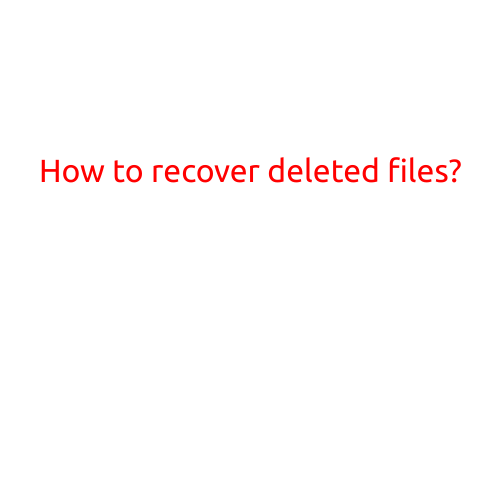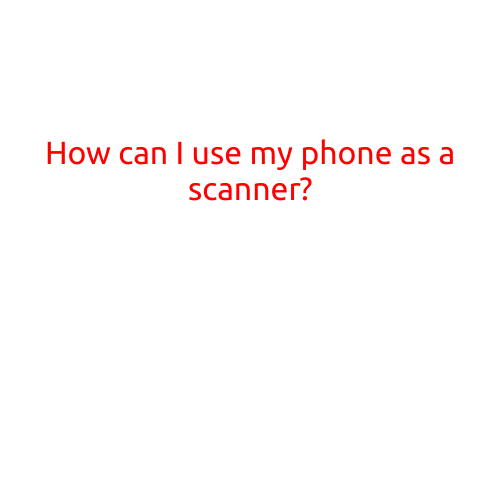
How to Recover Deleted Files?
Losing important files can be frustrating and stressful, especially if they contain valuable information or are irreplaceable. Fortunately, most deleted files are not immediately erased from your computer, and there are methods to recover them. In this article, we will guide you on how to recover deleted files and what precautions you can take to prevent data loss in the future.
Why Deleted Files Are Not Immediately Erased
When you delete a file, it doesn’t get deleted immediately. Instead, it goes to the Recycle Bin (on Windows) or Trash (on Mac) where it remains for a period of time. The duration of this time may vary depending on the operating system and storage device. During this period, you can still recover the deleted file.
How to Recover Deleted Files
Recovering deleted files requires careful attention and the right tools. Here are the steps:
- Stop Using the Device: The first step is to stop using the device where you deleted the file. The more you use the device, the greater the chance of data overwrite, making it difficult or impossible to recover the file.
- Check the Recycle Bin or Trash: Check the Recycle Bin (on Windows) or Trash (on Mac) to see if the deleted file is still there. If it is, you can restore it from there.
- Use Data Recovery Software: Data recovery software is designed to scan your device and recover deleted files. Some popular options include:
- Recuva (Windows)
- EaseUS Data Recovery Wizard (Windows, Mac, and Linux)
- Disk Drill (Windows and Mac)
- TestDisk (Windows, Mac, and Linux)
- Connect External Devices: Connect external devices such as USB drives, SD cards, and network drives to the device where you deleted the file. This can increase the chances of recovering deleted files.
- Scan for Deleted Files: Run the data recovery software and scan the device or connected external devices for deleted files. The software will search for files that have been marked for deletion.
- Preview and Recover Files: Once the scan is complete, preview the files that were found and select the ones you want to recover. The software will restore the files to their original location or a designated recovery folder.
Precautions to Prevent Data Loss
While recovering deleted files is possible, it’s crucial to take precautions to prevent data loss in the first place. Here are some tips:
- Regular Backups: Regularly backup important files to an external device, cloud storage, or a dedicated backup drive.
- Use the Recycle Bin: Make it a habit to use the Recycle Bin (on Windows) or Trash (on Mac) to delete files, rather than using the “Shift + Delete” key combination, which bypasses the Recycle Bin.
- Use File-Saving Protocols: Use file-saving protocols such as the “Save As” option or the “Save” button with an option to “Open” or “Save a Copy” to avoid overwriting files.
- Avoid Multi-User Data Sharing: Avoid sharing files with multiple users, as this can lead to data corruption and deletion.
- Keep Your Device Up to Date: Regularly update your operating system and software to ensure you have the latest security patches and features.
Conclusion
Recovering deleted files is possible, but it requires care and attention. By following the steps outlined in this article and taking precautions to prevent data loss, you can minimize the risk of losing valuable files. Remember to stop using the device, check the Recycle Bin or Trash, use data recovery software, and connect external devices to increase your chances of recovery.





